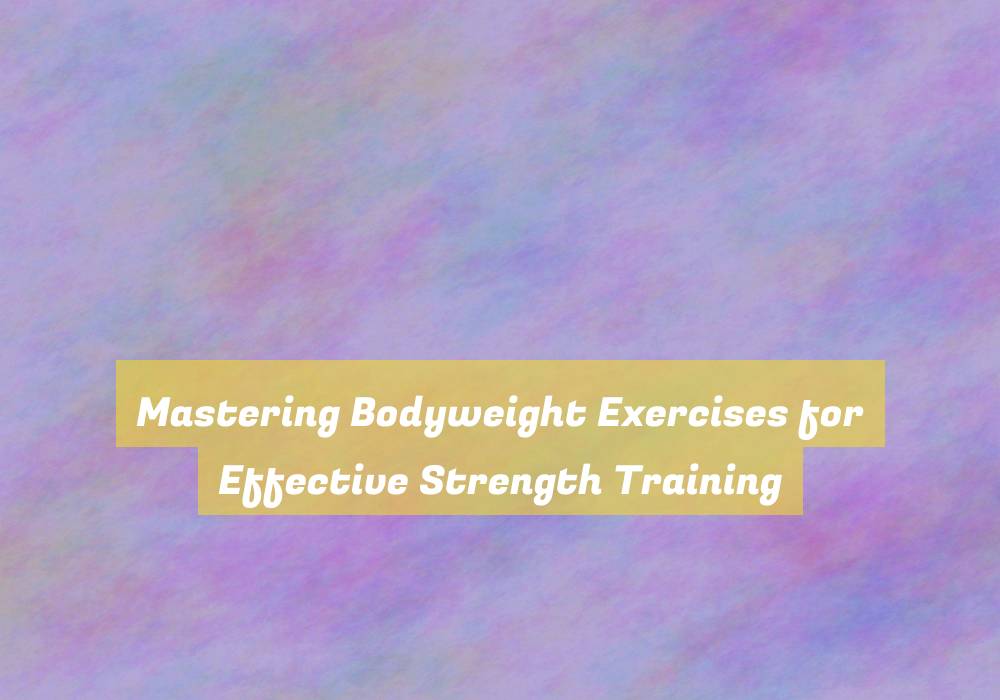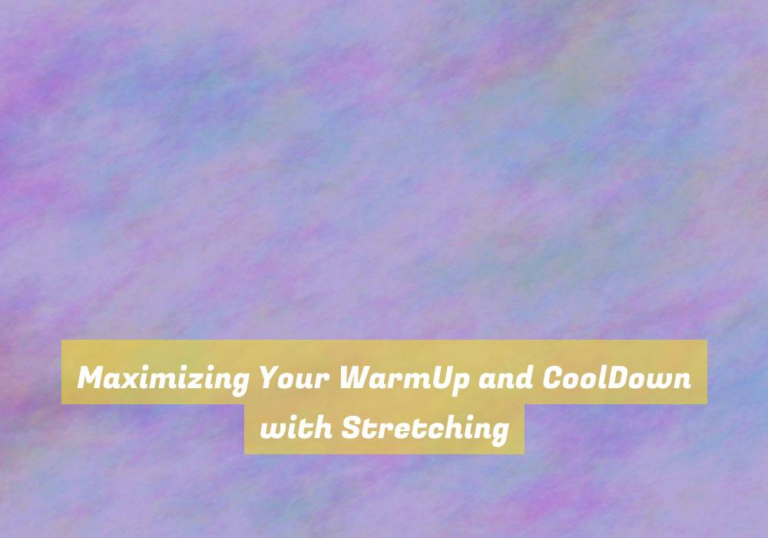Mastering Bodyweight Exercises for Effective Strength Training
YouG??ve probably heard the saying G??less is more,G?? and when it comes to strength training, mastering bodyweight exercises can truly embody this philosophy. The effectiveness of bodyweight exercises lies in their simplicity and versatility, allowing you to build strength and muscle without the need for fancy equipment or a gym membership.
But how do you ensure that your bodyweight training is effective and comprehensive? Well, get ready to uncover the essential techniques, effective program design, and progression strategies that will take your bodyweight training to the next level.
Benefits of Bodyweight Exercises
Experience the full range of motion and engage multiple muscle groups by incorporating bodyweight exercises into your strength training routine. Unlike traditional weightlifting, bodyweight exercises like push-ups, squats, and planks require you to move your own body against gravity, leading to improved balance, coordination, and flexibility. By utilizing your own body as resistance, you can develop functional strength that translates into real-life activities. These exercises also allow for natural movement patterns, reducing the risk of injury and promoting better joint health.
Furthermore, bodyweight exercises are incredibly versatile and can be performed anywhere, without the need for special equipment. This makes them ideal for individuals with busy schedules or those who prefer to work out at home. Additionally, they offer the flexibility to adjust the intensity simply by modifying the angle or position of your body, providing a scalable challenge for beginners and advanced athletes alike.
Incorporating bodyweight exercises into your routine can also improve your overall body awareness and proprioception, leading to better mind-muscle connection and enhanced athletic performance. Embrace the benefits of bodyweight exercises and take your strength training to the next level.
Essential Bodyweight Exercise Techniques
To effectively master essential bodyweight exercise techniques, focus on maintaining proper form and control throughout each movement.
Start with the basic bodyweight exercises such as squats, push-ups, and planks. For squats, keep your feet shoulder-width apart, chest up, and lower down as if sitting back into a chair. Ensure your knees donG??t go beyond your toes.
When doing push-ups, maintain a straight line from head to heels, and keep your core engaged throughout the movement.
For planks, place your forearms on the ground, elbows aligned below the shoulders, and keep your body in a straight line from head to heels. Engage your core and hold the position without letting your hips sag.
As you progress, focus on mastering more challenging exercises such as pistol squats, handstand push-ups, and front levers.
Remember to always prioritize proper form and control to maximize the effectiveness of your bodyweight training.
Designing a Comprehensive Training Program
Consider designing a comprehensive training program by incorporating a balance of strength, flexibility, and cardiovascular exercises to achieve optimal results.
To start, focus on bodyweight exercises that target all major muscle groups, such as push-ups, squats, lunges, and planks. These exercises build functional strength and stability.
Additionally, integrating flexibility exercises like yoga or dynamic stretching routines can enhance your range of motion and reduce the risk of injuries.
As for cardiovascular training, activities like brisk walking, cycling, or jumping jacks can elevate your heart rate and improve overall endurance.
When structuring your program, aim for a mix of exercises throughout the week, ensuring adequate rest between sessions to allow for muscle recovery.
ItG??s important to progressively challenge yourself by increasing the intensity or duration of your workouts as your fitness level improves.
Remember to listen to your body and adjust the program as needed.
Progressing Your Bodyweight Training
Once you have built a solid foundation with basic bodyweight exercises, itG??s time to progress your training for greater strength and skill. There are several ways to advance your bodyweight training and continue challenging your muscles.
One effective method is to increase the difficulty of the exercises youG??re already doing. For example, if you have mastered regular push-ups, you can progress to diamond push-ups or one-arm push-ups. This change forces your muscles to adapt to a more strenuous movement, leading to increased strength gains.
Another way to progress your bodyweight training is to incorporate plyometric exercises. Plyometrics involve explosive movements that can help improve power and agility. Adding exercises such as plyometric push-ups, jumping lunges, or box jumps to your routine can take your training to the next level.
Furthermore, you can also increase the time under tension for each exercise. Slowing down the eccentric (lowering) phase of an exercise and pausing at the most challenging point can intensify the workload on your muscles, leading to greater strength development.
Conclusion
So, now that you understand the benefits and techniques of bodyweight exercises, itG??s time to start incorporating them into your training program.
By designing a comprehensive plan and progressing your exercises, you can effectively build strength and improve your overall fitness.
Remember, mastering bodyweight exercises takes time and dedication, but the results are well worth the effort.
So, get started and enjoy the benefits of this versatile and effective form of strength training.






